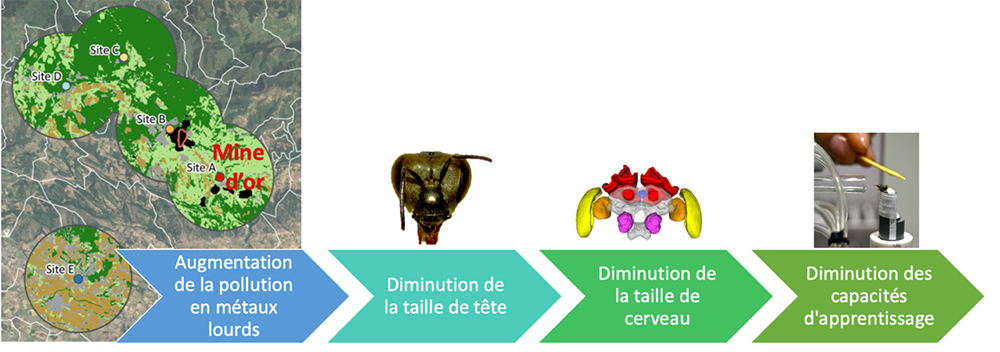Follow us on Google News (click on ☆)

Scientists exposed colonies of honeybees to various levels of metal pollution within a 7-mile radius around the former gold mine of Salsigne, in the Montagne Noire of southern France. It is one of Europe's most polluted sites with heavy metals, especially arsenic, which was used for gold extraction for decades – earning it the grim nickname "valley of arsenic." During the experiment, the bees gradually became contaminated through contact with dust, water, or nectar, and pollen in plants.
After two months of exposure at this site, the scientists brought the bees back to the laboratory to study their behavior. They assessed their cognitive health through conditioning protocols in which the bees had to learn to associate a scent with a sugary water reward. Consequently, the bees collected near the mine - and thus near the source of pollution - showed learning defects, no longer being able to recognize the characteristic scents of nectar-rich flowers or the chemical messages sent by their peers for communication. The performance of these highly contaminated bees was 36% lower than that of bees collected far from the mine.
The brain analysis of the bees, using X-ray imaging followed by artificial intelligence processing, confirmed that the volume of the region responsible for scent processing (the antennal lobes) was nearly 4% smaller in foragers collected near the mine, compared to those collected at a greater distance. This indicates that chronic exposure to trace metallic elements, particularly arsenic, affected the development of the bees.

© Coline Monchanin
Although these bees do not die directly from heavy metal exposure, the cognitive and developmental effects observed in this study are problematic for colony functioning, leading to a risk of population collapse in the medium term. One can also envisage dramatic consequences on the pollination service provided by these insects, on which our terrestrial ecosystems heavily depend.
These results therefore raise serious concerns about the health of pollinators in areas polluted by harmful metallic elements. They generally encourage a rethinking of the quantification of environmental pollutions and the associated regulations.
Reference:
Monchanin C, Drujont E, Le Roux G, Lösel PD, Barron AB, Devaud JM, Elger A, Lihoreau M. Environmental exposure to metallic pollution impairs honey bee brain development and cognition. J Hazard Mater. 2024 Mar 5;465:133218.
doi: 10.1016/j.jhazmat.2023.133218. Epub 2023 Dec 14.